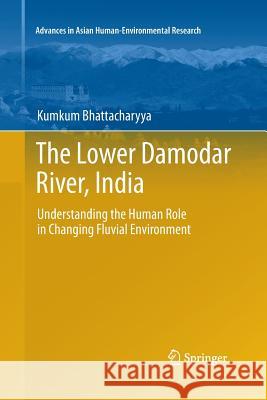The Lower Damodar River, India: Understanding the Human Role in Changing Fluvial Environment » książka
The Lower Damodar River, India: Understanding the Human Role in Changing Fluvial Environment
ISBN-13: 9789400735743 / Angielski / Miękka / 2014 / 308 str.
The Lower Damodar River, India: Understanding the Human Role in Changing Fluvial Environment
ISBN-13: 9789400735743 / Angielski / Miękka / 2014 / 308 str.
(netto: 576,41 VAT: 5%)
Najniższa cena z 30 dni: 578,30
ok. 22 dni roboczych
Bez gwarancji dostawy przed świętami
Darmowa dostawa!
Interweaving the human aspects of river control with analysis of hydro-physical data, including historical data over the last few centuries, this monograph is a comprehensive evaluation of the Damodar s lower reaches. While the Damodar River isn t an exceptional tropical river, nor does it feature classic examples of river control structures, it is unusual and worthy of study due to the fact that nowhere else in the tropical world have riverine sandbars been used as a resource base as well as for permanent settlements. Based on their knowledge of river stages, the inhabitants have fine-tuned their land use to flood events, applying a concept of flood zoning to the riverbed. Every available space has been utilized rationally and judiciously.This rare human-environmental study analyzes the remarkable way in which immigrants unfamiliar with the riverine environment have adapted to the altered hydrologic regime of the river. In doing so they have demonstrated a sophisticated understanding of the flood regime and the vagaries of an unpromising environment in their land use, cropping and settlement patterns. Spurred on by restricted social and economic mobility and sometimes political constraints, these self-settled refugees have learned to adapt to their environment and live with the floods.Bhattacharyya s text is particularly timely, as anthropogenic processes of this kind have not been adequately studied by geographers."











